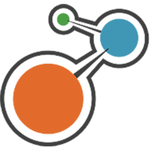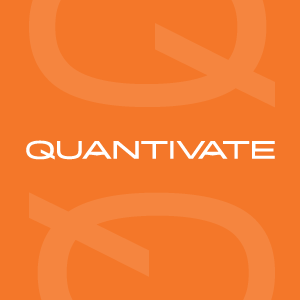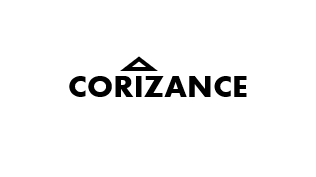Integrated Risk Management (IRM) software is intended to be available from different devices and platforms. This means you can access and manage your risk management tasks and data from any computer, laptop, tablet, or smartphone, independent of operating system. This ensures a consistent workflow across all of your devices, making it easy to keep on top of your risk management tactics and identify any threats.
List of Best Integrated Risk Management (IRM) Software
Corporater is a dynamic software solution that offers a range of features to enhance governance, performance, risk, and compliance management for organizations of any size. Trusted by leading companies globally, Corporater streamlines complex tasks a...Read More Corporater
Cammsrisk is a and versatile Risk Management Software tailored for Agencies and Enterprises. It is web-based solution that includes a wide range of tools such as Risk Assessment, Auditing, Reputational Risk Management, Exceptions Management, and Lega...Read More Cammsrisk
Experience the ultimate risk and compliance management solution with Riskonnect. Our robust platform simplifies the process for businesses by providing an easy-to-use interface and top-notch security features. Stay informed and collaborate effectivel...Read More Riskonnect
Red Marker solution for digital marketing regulatory compliance risk management. Our state-of-the-art AI technology utilizes machine learning and natural language processing to automate content reviews. With Red Marker, you can ensure your marketing...Read More Red Marker
StandardFusion is a robust GRC solution that simplifies governance, risk, and compliance processes for improved efficiency and reliability. Its customizable tools are adaptable to your organizations development, seamlessly integrating essential opera...Read More StandardFusion
Ideagen Risk Management is a software solution designed to streamline risk evaluation, enhance compliance management, and support informed decision-making. Featuring a user-friendly interface, live data analysis, and customizable reporting capabiliti...Read More Ideagen Risk Management
Ncontracts is a vendor management system software tailored for credit unions, banks, and mortgage lenders. Our all-encompassing features simplify vendor management and risk mitigation. Our reliable support team is readily available to assist you at a...Read More Ncontracts
Quantivate is an advanced VMS software designed to aid businesses in managing risk, compliance, and governance. With our comprehensive solution, your processes become streamlined, scalable, and tailored to your specific requirements. Take advantage o...Read More Quantivate
CookieYes is solution for keeping your website compliant with privacy laws. Our advanced features, including customizable consent banners, automatic scanning, and detailed reports, help you build trust with your audience and maintain transparency. By...Read More CookieYes
SureClouds Aurora platform is a solution for Governance, Risk, and Compliance (GRC). Our highly advanced platform enables organizations to efficiently assess and mitigate risks, and stay compliant with industry regulations. With SureClouds innovative...Read More SureCloud
Resolver Vulnerability Managementis a solution for identifying, assessing, and addressing vulnerabilities in both digital and physical environments. This powerful software enables organizations to quickly and effectively mitigate potential risks, pro...Read More Resolver Vulnerability Management
Compliance 360 is compliance management solution that aims to streamline and strengthen regulatory compliance, risk management, and auditing processes for businesses. It offers a comprehensive range of tools including policy management, incident trac...Read More Compliance 360
V-Comply is an advanced cloud-based platform designed to streamline Governance, Risk, and Compliance Management for businesses. With our solution, easily track progress and stay on top of regulatory requirements on the go. Our powerful and user-frien...Read More V-Comply
Corizance is a cloud platform that delivers all-encompassing risk management solutions for a range of industries. Utilizing state-of-the-art AI and integrated analytics, Corizance caters to non-financial risks in established businesses operating in h...Read More Corizance
Learn More About Integrated Risk Management (IRM) Software
- What Is Integrated Risk Management (IRM) Software?
- What Are The Recent Trends In Integrated Risk Management (IRM) Software?
- Benefits Of Using Integrated Risk Management (IRM) Software
- Important Factors To Consider While Purchasing Integrated Risk Management (IRM) Software?
- What Are The Key Features To Look For In Integrated Risk Management (IRM) Software?
- Why Do Businesses Need Integrated Risk Management (IRM) Software?
- How Much Time Is Required To Implement Integrated Risk Management (IRM) Software?
- What Is The Level Of Customization Available In Integrated Risk Management (IRM) Software?
- Which Industries Can Benefit The Most From Integrated Risk Management (IRM) Software?
- Conclusion
What Is Integrated Risk Management (IRM) Software?
Integrated Risk Management (IRM) software is a comprehensive solution that enables firms to manage and mitigate many types of risk. In today's complicated business climate, organizations confront a variety of risks, including financial, operational, legal, and reputational. IRM software offers a consolidated platform for identifying, assessing, and monitoring these risks, allowing businesses to make educated decisions and reduce possible losses.
One of the primary aspects of IRM software is its ability to combine data from a variety of sources, including compliance reports, internal audits, and external risk assessments. This gives for a more comprehensive perspective of the organization's risk landscape, resulting in improved risk management methods. The platform also enables automated risk assessments and real-time monitoring, which reduces manual effort while giving accurate and fast risk insights.
Another advantage of IRM software is its adaptability to various sectors and compliance standards. From finance and healthcare to energy and manufacturing, IRM software may be customized to meet the unique requirements of each business. This guarantees that organizations can address risks and comply with industry-specific requirements, hence boosting overall risk management effectiveness.
Furthermore, IRM software provides collaboration and communication tools, allowing for effective communication across different departments and stakeholders involved in risk management. It also has customized reporting and visualization options that enable decision-makers to see risk data in a clear and succinct manner. Investing in IRM software can provide numerous benefits to firms, including improved risk visibility, better decision-making, increased compliance, and cost savings.
When selecting the correct IRM software for your organization, you must evaluate scalability, integration capabilities, ease of use, and vendor support. With the correct IRM software in place, businesses can manage risks proactively, assuring long-term success and sustainability.
What Are The Recent Trends In Integrated Risk Management (IRM) Software?
As firms face a more complicated risk landscape, the demand for Integrated Risk Management (IRM) software is rising. IRM software assists firms in identifying, assessing, and mitigating risks across all parts of their operations, giving a comprehensive approach to risk management. To be competitive, IRM software companies must constantly evolve and adapt to new developments.
Here are some of the latest trends in integrated risk management software:
1. Improved Integration Capabilities: In today's interconnected business world, threats can come from a variety of sources and affect multiple sections of an organization. This has resulted in an increased demand for IRM software that can connect with other systems and data sources to provide a holistic view of hazards. IRM software suppliers offer integration options like as APIs, data connectors, and pre-built interfaces to facilitate real-time data exchange and streamline risk management operations.
2. AI And Machine Learning: With an increasing quantity of data available, firms must use technologies such as AI and machine learning to discover and predict potential dangers. IRM software suppliers are implementing these capabilities into their systems to assist enterprises in identifying patterns, forecasting future risks, and making more educated decisions.
3. Real-Time Monitoring: Because risks can appear and grow quickly, real-time monitoring has become an essential component of IRM software. This enables firms to detect and respond to hazards in a timely manner, thereby limiting their impact. IRM software companies offer real-time dashboards, warnings, and notifications to keep firms informed of potential hazards.
4. Mobile Accessibility: With the advent of remote work, the demand for mobile accessibility has grown. Many IRM software suppliers now include mobile apps or responsive interfaces, allowing users to access crucial risk management data from anywhere and at any time.
5. Emphasis On User Experience: User experience is increasingly crucial in the acceptance and success of IRM software. Providers are focused on providing intuitive and user-friendly interfaces to ensure that their product is adopted and used more frequently.
Benefits Of Using Integrated Risk Management (IRM) Software
Integrated Risk Management (IRM) software is an essential tool for businesses and organizations seeking to efficiently manage and mitigate risks across several departments and activities. IRM software provides various benefits by combining core risk management features on a single platform, allowing firms to better their risk management procedures and achieve long-term success.
Let's look at some of the key advantages of employing integrated risk management software.
1. Centralized Risk Management: One of the primary benefits of employing IRM software is the opportunity to centralize your risk management activities. This implies that all risk-related data, assessments, and tasks can be viewed and handled from a single location, giving you a comprehensive perspective of your organization's risk environment. This eliminates the need for many disparate systems, saving both time and effort.
2. Improved Risk Identification And Assessment: IRM software allows you to identify and evaluate risks more efficiently and precisely. The software enables you to design bespoke risk assessment templates, run risk surveys, and analyse risk data in order to obtain important insights into potential dangers. This allows you to prioritize risks, spend resources more efficiently, and make better decisions.
3. Collaboration And Communication: IRM software encourages collaboration and communication among various departments involved in risk management. It enables teams to collaborate, share risk information, and communicate in real time, which improves overall risk management efforts and encourages a proactive approach to risk mitigation.
4. Real-Time Monitoring And Reporting: Another key advantage of implementing IRM software is the ability to track and monitor hazards in real time. The program provides real-time dashboards that present essential risk information, such as risk levels, status, and trends, in an understandable format, allowing stakeholders to make proactive and timely choices. Automated reporting tools also make it simple to create risk reports for audits, compliance, and regulatory requirements.
5. Streamlined Compliance: IRM software enables firms to meet compliance standards by streamlining the entire compliance process. It lets you define and map regulatory duties, automate compliance procedures, and create compliance reports. This not only saves time and effort, but also allows the organization to avoid penalties or fines for noncompliance.
6. Cost Savings: Finally, IRM software has the potential to save firms a lot of money over time. Organizations can save time and money by centralizing their risk management efforts, automating repetitive procedures, and promoting streamlined processes. Furthermore, by lowering the likelihood and impact of risks, firms can avoid costly scenarios while protecting their bottom line.
Important Factors To Consider While Purchasing Integrated Risk Management (IRM) Software?
When it comes to integrated risk management software, there are several important elements to consider before making a purchase. This sort of software is designed to assist organizations in identifying, assessing, and mitigating possible risks throughout the organization, making it a must-have tool for any firm trying to improve its risk management procedures.
To guarantee that you choose the finest IRM software for your needs, examine the following factors:
1. Functionality: The first factor to consider is the functionality of the IRM software. It should be capable of managing a variety of risk management processes, including risk identification, assessment, monitoring, and reporting. It should also be able to interface with your organization's existing software platforms.
2. Customizability: Each firm has distinct risk management requirements and processes. As a result, you should look for IRM software that can be tailored to meet your individual needs. This ensures that the software is matched to your organization's processes, increasing its effectiveness and efficiency.
3. Usability: A decent IRM program should be user-friendly and simple to navigate. It should have a well-designed and intuitive interface that consumers can easily comprehend and use. This will reduce training time while increasing user acceptance inside your organization.
4. Scalability: As your firm grows, your risk management requirements will change. As a result, it's critical to choose IRM software that is scalable and can meet your future requirements. This will spare you the headache of switching to a new system as your company grows.
5. Integration Capabilities: For your IRM software to work effectively, it must be able to interact with other systems and software in your organization. CRM, ERP, and finance software are all possible examples. Integration ensures that data is seamlessly exchanged between systems, offering a comprehensive perspective of hazards and lowering the possibility of errors.
6. Security: To secure sensitive data, IRM software must include strong security measures. This includes user permissions, data encryption, and regular system updates. You should also confirm that the provider adheres to industry-standard security measures to protect your data.
7. Support And Training: When selecting IRM software, it is critical to examine the degree of support and training offered by the manufacturer. This will ensure that your staff is fully prepared to use the program and resolve any issues that may emerge. Look for vendors who provide training, customer support, and regular software updates. By taking these crucial elements into account, you may select the best IRM software for your organization, allowing you to manage risks proactively and secure your business.
What Are The Key Features To Look For In Integrated Risk Management (IRM) Software?
When planning to deploy Integrated Risk Management (IRM) Software, it is critical to assess the main aspects that will best meet your organization's specific requirements.
Here are the main things you should look for while selecting IRM software.
1. Risk Assessment And Identification Tools: A good IRM program should help you identify and assess all potential hazards in your organization. Look for tools that can perform complete risk assessments, including the capacity to assess both internal and external hazards.
2. Risk Monitoring And Reporting: The best IRM software will provide real-time monitoring and reporting, allowing you to track and assess risks as they arise. Look for configurable dashboards, automated alarms, and personalized reports.
3. Compliance Management: Compliance is an important facet of risk management, and the correct IRM software can help you ensure that your firm meets all legal standards. Look for tools that help with compliance management, like automated compliance checks, centralized document storage, and audit trails.
4. Incident Management: If a risk arises, IRM software should provide capabilities to assist you respond and limit its impact. Look for tools like event recording, risk rating, and action planning to help you manage and mitigate potential hazards.
5. Data Privacy And Security: As threats to data security and privacy become more frequent, it is critical to select IRM software with strong security features. To guarantee sensitive information is protected, look for capabilities such as data encryption, access control, and threat detection.
6. Integration And Compatibility: IRM software should work easily with your existing systems and processes, minimizing disturbance to your daily operations. Look for solutions that include synergies with other software and platforms, as well as compatibility with a variety of devices and operating systems.
7. User-Friendly Interface: The ideal IRM software should have an intuitive, easy-to-use interface. This ensures that all employees, regardless of technical ability, can efficiently utilize the product.
Why Do Businesses Need Integrated Risk Management (IRM) Software?
Businesses now face a wide range of internal and external risks that can have a significant impact on their operations and bottom line. These risks can come from a range of sources, including financial uncertainty, cyber attacks, compliance violations, natural calamities, and so on. As a result, businesses must now have a comprehensive risk management approach.
Integrated Risk Management (IRM) is a complete risk-management strategy that considers all aspects of a firm, including its employees, procedures, and technology. IRM software is a powerful tool for helping businesses identify, assess, and mitigate risks in a consistent and efficient manner. It consolidates all important risk management procedures, including risk assessment, monitoring, and mitigation, into a single, integrated platform.
One of the most essential reasons why companies need IRM software is to gain a full understanding of their risk picture. Traditional risk management strategies may include multiple divisions within a corporation assessing and reducing risks with various tools and processes. This often results in segmented data and a fragmented view of hazards, making it difficult to gain a whole picture.
IRM software overcomes this issue by offering a unified platform for all risk-related duties. them collects data from a range of sources, including financial systems, operational systems, and third-party sources, and consolidates them into a unified system. This allows for a more accurate and comprehensive understanding of hazards across the organization. Another important characteristic of IRM software is the ability to detect and evaluate dangers in real time.
Businesses cannot afford to rely on manual or outdated risk management solutions as threats become more common and complex. IRM software uses advanced analytics and automation to continuously analyze the risk landscape and send out timely notifications about potential dangers. IRM software also improves risk communication and collaboration inside a firm.
It enables several departments and stakeholders to share information and collaborate in real time, ensuring that everyone is on the same page when it comes to identifying and mitigating risks. This not only improves efficiency, but it also enables better decision-making and risk mitigation strategies.
How Much Time Is Required To Implement Integrated Risk Management (IRM) Software?
The time required to implement integrated risk management (IRM) software varies based on a number of factors. The size and complexity of an organization, the number of users, and the specific features and customisation required can all influence the implementation timeline. The usual installation time for IRM software ranges from a few weeks to several months. This comprises the initial configuration, data migration, and training.
Complex organizations with several divisions and locations may require up to a year to complete. The first step in installing IRM software is for the business to conduct a thorough risk assessment and document its current processes and procedures. This aids in identifying areas for improvement as well as determining the necessary software features and modules.
Next, the software provider will collaborate closely with the organization to tailor the program to their exact goals and requirements. This may include customizing workflows, establishing user access and rights, and integrating the program with other current systems. Data migration is an important phase in the implementation process. The firm must transfer their present data and information into the new software, which can be a time-consuming process.
To avoid discrepancies or errors, verify that the data is sent accurately. Once the software is properly configured and the data is transferred, the business must teach its staff on how to utilize the new program successfully. This involves informing them about the various features and functionalities, as well as any new processes or procedures that may be implemented.
What Is The Level Of Customization Available In Integrated Risk Management (IRM) Software?
IRM software provides organizations with a complete and streamlined approach to managing all aspects of risk. One of the most important features of IRM software is its flexibility to be customized to meet the specific demands of each company. This level of flexibility is critical for businesses that operate in multiple industries, face variable levels of risk, and require tailored risk management techniques. The extent of customisation in IRM software varies by vendor. However, most credible IRM software suppliers provide a variety of customization options to meet the different needs of their clients.
There are the following options:
1. Customizable Risk Framework: IRM software enables firms to develop and tailor their risk frameworks to their individual business objectives, risk appetite, and industry laws. This framework underpins all risk management operations, such as risk assessments, mitigation plans, and monitoring.
2. Configurable Risk Assessment Methodology: IRM software supports a variety of risk assessment methodology, including qualitative, quantitative, and hybrid approaches. Organizations can choose the best appropriate methodology and tailor it to their own needs. They can also define their own risk assessment procedures and weightings for certain risk indicators.
3. Industry-Specific Templates: Many IRM software providers provide pre-built templates for a variety of industries, including finance, healthcare, and manufacturing. These templates are designed to comply with industry laws and can be changed to meet the organization's specific risk profile.
4. Role-Based Access: With IRM software, businesses may configure user roles and permissions to limit access to sensitive data. This ensures that only authorized workers can access relevant risk information.
5. Customizable Reporting: IRM software provides customizable reporting options, allowing organizations to design reports and dashboards that meet their specific requirements. They can also decide on the frequency and format of these reports, making it easier to communicate risk information to stakeholders.
Which Industries Can Benefit The Most From Integrated Risk Management (IRM) Software?
Integrated Risk Management (IRM) software is a strong tool that can help a variety of businesses streamline their risk management procedures and increase overall productivity. However, certain businesses can profit the most from deploying IRM software.
Let us take a closer look at these industries and how they might benefit from specialist software.
1. Financial Services Industry: The financial services business is heavily regulated, necessitating strong risk management practices to assure compliance and reduce potential financial hazards. IRM software can offer a consolidated platform for managing various types of risks, including credit, market, operational, and reputational risks. It enables financial institutions to identify, assess, and monitor risks in real time, allowing them to make more informed decisions and take proactive steps to reduce prospective losses.
2. Healthcare Industry: The healthcare industry is continually exposed to a wide range of hazards, including patient safety and data breaches, as well as regulatory compliance. IRM software can assist healthcare businesses improve their risk management procedures by automating tasks and offering real-time visibility into potential risks. This software enables healthcare practitioners to easily detect and assess risks, apply mitigation methods, and track their efficacy, assuring their patients' safety and well-being.
3. Manufacturing Industry: The manufacturing industry is known for its extensive and interwoven supply chain, which makes it vulnerable to a variety of risks including supply chain interruptions, quality control concerns, and compliance risks. IRM software can provide firms with a consolidated platform for assessing and managing risks throughout their supply chain. It can also assist them in identifying areas for improvement and implementing initiatives to increase overall operational resilience.
4. Retail And E-commerce Industry: In the fast-paced world of retail and e-commerce, firms must be aware of potential risks such as cyber threats, supply chain disruptions, and reputational hazards. Retailers and e-commerce enterprises can use IRM software to proactively manage these risks by offering real-time visibility and automating risk assessment processes. This software can also help you establish strong contingency plans to mitigate the impact of probable hazards and assure continuous operations.
5. Government And Public Industry: Government agencies and public sector organizations are tasked with managing a wide range of complex hazards, from cybersecurity threats to natural disasters. IRM software can help these businesses identify and assess risks, create risk response plans, and track their success. This software also enables effective cooperation between departments, ensuring a coordinated approach to risk management.
Conclusion
To summarize, Integrated Risk Management (IRM) software provides a comprehensive solution for firms seeking to manage and mitigate risks in an integrated and effective manner. IRM software, with its numerous features and functionalities, assists users in identifying, assessing, and prioritizing risks across the company, enabling proactive risk management and decision-making.
Before making a selection, organizations should carefully evaluate and compare various IRM software options to their individual needs and requirements. Some essential considerations are the software's interoperability with existing systems, ease of use, scalability, and customization choices. Furthermore, it is critical to select a credible and trustworthy vendor who provides ongoing support and upgrades to guarantee the software remains relevant and successful in the long run.
Businesses that invest in effective IRM software can not only minimize their risk exposure, but also increase operational efficiency, compliance, and performance. Ultimately, the correct IRM software may help firms obtain a competitive advantage by efficiently managing risks and making informed decisions, resulting in long-term growth and success. We hope our buyer's guide has provided you with useful insights and information to assist you in making an informed decision and selecting the finest IRM software for your firm.
Integrated Risk Management (IRM) Software FAQ's
Can Integrated Risk Management (IRM) Software Be Accessed Across Multiple Devices And Platforms?
Is Integrated Risk Management (IRM) Software Future-Proof And Adaptable To Emerging Technologies Like AI, Blockchain Or IoT?
Yes, Integrated Risk Management (IRM) software is intended to be future-proof and adaptable to new technologies such as AI, blockchain, and IoT. This is because IRM software is constantly updated and integrates seamlessly with new technology.
Additionally, IRM software allows firms to consolidate and automate risk management operations, making it easier to absorb new technologies as they emerge. This ensures that the software is current and adaptive to evolving trends in a fast changing corporate context.
Is There A Free Trial Offered To Assess Integrated Risk Management (IRM) Software Before Committing?
Yes, many IRM software suppliers allow a free trial of their products before making a commitment. This enables potential users to evaluate the software's features and functionality and determine whether they match their individual needs and expectations. The trial period can be longer or shorter, but it usually lasts between 14 and 30 days. It is recommended that you take advantage of the free trial offer to thoroughly assess the software and its features before making a final decision.
Does Integrated Risk Management (IRM) Software Offer Data Security Features And Meet Regulatory Compliance Standards?
Yes, Integrated Risk Management (IRM) software includes sophisticated data security measures to protect sensitive information and ensure regulatory compliance. These features include user access control, encryption, data backup and recovery, and vulnerability management.
By integrating these safeguards, IRM software assures data confidentiality, integrity, and availability, allowing enterprises to comply with standards such as GDPR and HIPAA. Furthermore, IRM software offers audit trails and real-time data, allowing organizations to demonstrate their compliance efforts to regulatory authorities.
Can Integrated Risk Management (IRM) Software Integrate Seamlessly With Existing Tools And Platforms?
Yes, IRM software is designed to work smoothly with existing tools and platforms, making it a useful asset to enterprises. It may work with a variety of risk management tools, compliance systems, and databases, providing for a more centralized and complete approach to risk management. This connectivity also allows for data exchange and collaboration across departments, resulting in increased efficiency and effectiveness in risk management operations.
















